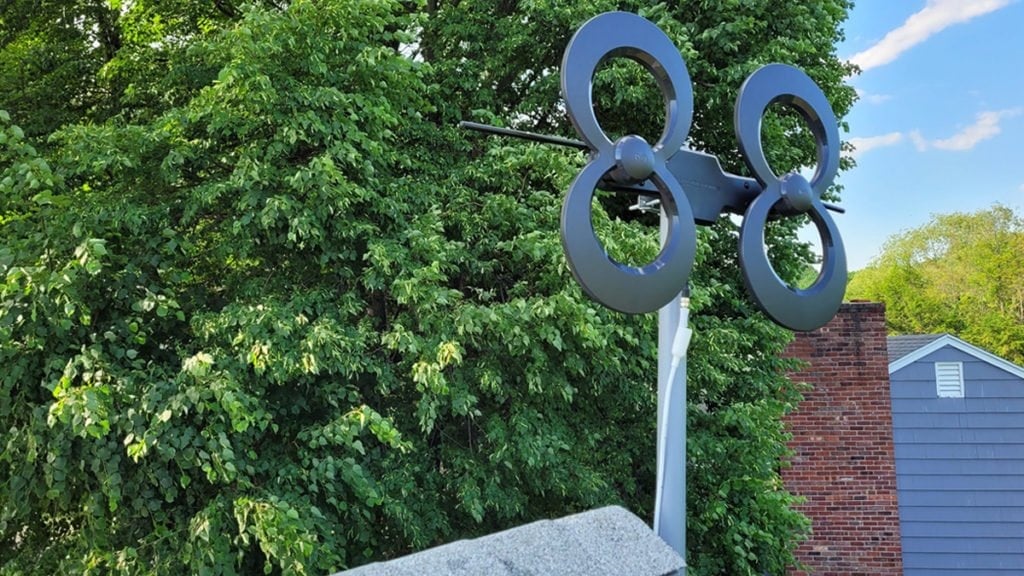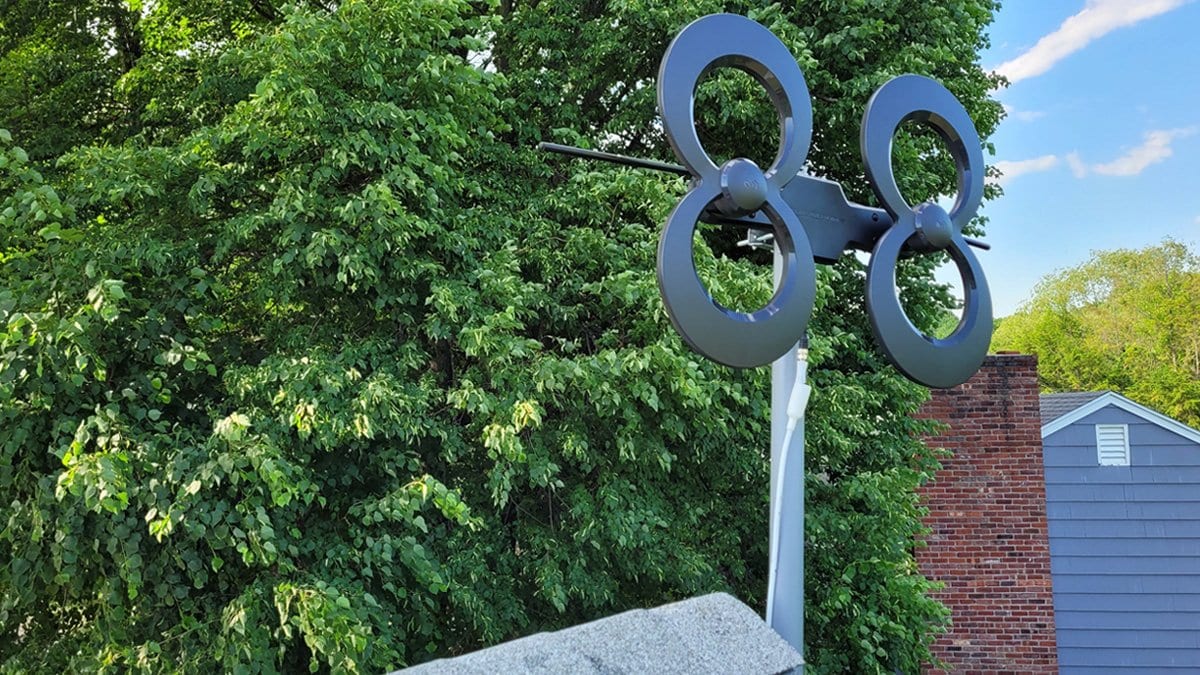Wondering ‘what channels can I get with my antenna’? You’re likely to receive the major broadcast networks, such as ABC, CBS, FOX, and NBC, along with a plethora of other stations.
There are a variety of local networks available for free on over-the-air channels such as local PBS affiliates and The CW Network. MeTV, GRIT, and ionTV are sub-channels and may be available in your area along with independently-owned TV stations.
Antenna TV channels by ZIP code can vary, but metropolitan areas like Boston, New York City, or Los Angeles generally have a richer array of local TV stations compared to rural areas. However, most cities and towns across the U.S. offer a substantial selection of free over-the-air channels.
Searching for your antenna TV channels by ZIP code is the easiest way to determine what your channel lineup could look like, and help you decide the appropriate TV antenna for your household. The Federal Communications Commission (FCC) has a free online tool called DTV Reception maps (a.k.a. DTV gov maps).
This online tool can show you digital TV signals in your area.
Is an Antenna Right for You?
You shouldn’t hesitate to try free over-the-air television. That’s true even if you live in a smaller city, town or rural area with only a few TV broadcast towers nearby.
Since the late 1990s, TV stations have transitioned from analog to digital TV signals. The transition to digital broadcast signals has made it easier to receive free local channels in many parts of the U.S.
Every Smart TV on the market has an internal TV tuner for digital broadcasts. While signal strength for OTA channels is important, it’s not as challenging as some online sources suggest.

Before you buy a TV antenna, using DTV Reception maps or a similar online tool can show you more than just digital TV signals in your area.
By entering your zip code into the tool, you can quickly see a summary of broadcasters within your range. The report shows you signal strength, and most importantly, whether broadcasters are on the UHF or VHF band. This piece of information can help you decide whether you need an indoor antenna or an outdoor antenna.
TV Antenna Compatibility and Range
As long as you live within range of local broadcast towers powered by your local stations, you can watch whatever free channels are available. A TV antenna works with Smart TVs and old non-Smart TVs.
Even with the transition to NextGen TV underway, TV stations are expected to carry a simulcast in digital for the next several years once they switch.
The Truth About TV Antennas and Cable Channels
You should avoid any company suggesting that a TV antenna is capable of getting cable TV channels.
The FCC shut down a New York-based company in March 2021 that sold hundreds of thousands of indoor TV antennas while claiming its antennas could get cable channels such as AMC and HBO for free.
How Far Can TV Antennas Really Reach?
Be wary of exaggerated claims regarding TV antenna range. While some companies assert their antennas can fetch signals from 100, 200, or even thousands of miles away, such statements are often misleading and not grounded in reality.
TV signals diminish very fast, but travel at the speed of light in a line-of-sight direction. In other words, over-the-air signals do not travel along the curve of the Earth and keep going.
If TV antennas could receive channels from broadcast towers hundreds of miles away, it would cause a huge problem.
Let’s say you were living in Boston trying to get your local CBS station on channel 4.
If your TV antenna had the ability to cover hundreds of miles, then you would have many TV signals overlapping with one another.
Channel 4 in Boston would appear on your TV, but so wouldn’t Channel 4 in Rhode Island, Philadelphia, Maine, New York and so on. Your TV screen would be a jumble of unwatchable overlapping signals.
The reason why we don’t have to worry about overlapping channels is that the FCC regulates broadcast, cable and satellite transmissions. Television Market Areas, also known as designated market areas (DMAs) ensure you can get a decent TV signal.
TV broadcasters are allowed to operate on specific frequencies to prevent interference with neighboring DMAs or TV markets. The DMA system ensures that stations do not overlap with their signals, preventing poor signal quality or interference.
What is a realistic range for a TV antenna?
I have my own takeaways on antenna performance based on my experience of testing antennas for hundreds of hours across states.
A realistic range for an indoor TV antenna is about 35 miles. An outdoor TV antenna placed on a roof or in an attic can get broadcast signals from 55 to 60 miles away under ideal conditions. Could someone get a TV signal from 70 miles away? Maybe, but it’s uncommon, and you are likely to get an inconsistent signal.
NextGen TV: The Future of Broadcast Television
Many TV stations across the U.S are currently transitioning from digital High Definition or HD signals to NextGen TV, also known as ATSC 3.0. It’s already in about 73 TV markets across the U.S.
This new broadcast standard is expected to deliver more TV channels in a higher picture quality.
NextGen TV has the capability to deliver Ultra High Definition (UHD) 4K picture resolution, High Dynamic Range (HDR) and Dolby audio. You may one day be watching these channels from your smartphone or tablet.
Broadcasters that have implemented NextGen TV are airing programs at a max resolution of 1080p and HDR10, not 4K. For now, it’s grappling with issues that have left many of its viewers unhappy.
I have been testing NextGen TV for several months now, and so far, reception can be spotty. The biggest problem to date, regardless of your TV setup, is the decision of broadcasters to use Digital Rights Management (DRM).
DRM essentially encrypts TV signals, and it has become an obstacle for both consumers, and hardware manufacturers. Consumers have also voiced concerns that DRM can limit features that are available under the current standard.
For now, it’s best to stick with the current digital TV standard (ATSC 1.0). You can easily enjoy free TV with the current broadcast standard, and even add an OTA DVR for recordings.
Some models, like the Tablo 4th Generation and HDHomeRun, make your OTA channels available on smartphones and tablets on your home Wi-Fi network.
FAQs Getting Antenna TV Channels in Your Area
What channels do you get with a local antenna?
A: With a local TV antenna, you typically receive the major broadcast networks like ABC, CBS, FOX, and NBC.
Additionally, you can access a variety of other local networks and sub-channels, including PBS affiliates, The CW Network, MeTV, GRIT, and ionTV, among others. The exact channels you get can vary based on your location and the antenna’s range.
How many channels can you get with a regular TV antenna?
The number of channels you can receive with a regular TV antenna varies based on your geographical location and the quality of the antenna.
Generally, you can expect to receive anywhere from a dozen to over 50 channels. Metropolitan areas often have a wider selection of channels compared to rural areas.
How do you tell if an antenna will work in my area?
To determine if an antenna will work in your area, consider the following steps:
- Check the signal availability: Use tools like the FCC’s DTV reception maps or websites like TVFool.com to see which broadcast towers are near your location.
- Evaluate the antenna’s range: Ensure the antenna’s range is sufficient to cover the distance from the broadcast towers.
- Consider geographical factors: Obstacles such as hills, buildings, and trees can impact signal reception. An outdoor or attic-mounted antenna might be necessary in areas with obstructions.
How do you find what channels are available in my area?
To find out which channels are available in your area, you can use online resources such as the FCC’s DTV reception maps or AntennaWeb.org.
By entering your zip code or address, these tools provide a list of available channels, the location of broadcast towers, and the type of antenna you might need for optimal reception.
How do I search for channels on my TV?
To search for channels on your TV, follow these general steps:
- Connect your antenna to the TV’s antenna input.
- Access the TV’s menu using the remote control.
- Navigate to the channel setup or installation menu.
- Select the option for ‘Channel Search’ or ‘Auto-Tune’.
- Allow your TV to automatically scan and add available channels. This process might take a few minutes.
- Once the scan is complete, you can browse through the channels using your remote control.
